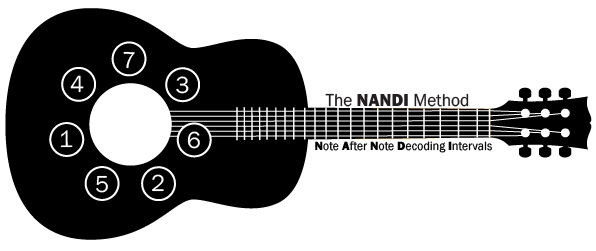You should be familiar with the open chords before jumping into barre chords.
Check out our videos on finding both C Major and C Minor chords across your fretboard!
Major barre chords are achieved by taking one of the open CAGED shapes and using a finger as a barre, usually your index finger.
An “E” shape major barre chord (1-5-1-3-5-1) with the root on the E strings, and an “A” shape major barre chord (1-5-1-3-5) with the root on the A string are seen below:
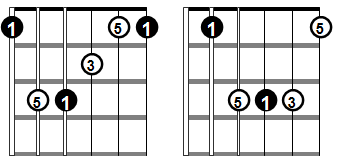
In the fret diagrams below, we will use the NANDI Method by using fourth intervals ( grey diamonds) as reference points to locate the intervals/notes of an Fmaj (F-A-C) barre chord with the root on the E strings, and a Cmaj (C-E-G) barre chord with the root on the A string.
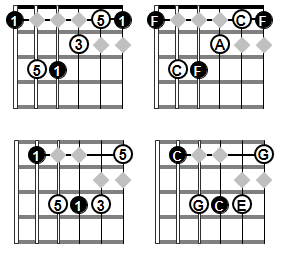

The most common major barre chord is actually the E major shape used in the CAGED system. If you were to fret an open E minor chord (E-G-B), but only used your pinky, ring, and middles fingers to fret the chord, then your index finger would be free. If you were to slide the E major shape up one fret and then use your index finger like a capo to hold down the previously open strings at the first fret, you will have successfully fretted an F major barre chord. The same principle applies to playing a C major barre chord with the A major shape.
Minor barre chords are achieved by taking one of the open minor CAGED shapes and using a finger as a barre (like a capo), usually your index finger.
An “E” shape minor barre chord (1-5-1-♭3-5-1) and an “A” shape minor barre chord (1-5-1-♭3-5) are seen below:
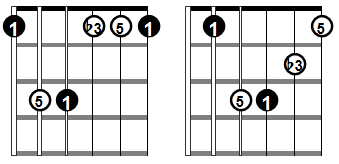
In the fret diagrams below, we will use the NANDI Method by using fourth intervals ( grey diamonds) as reference points to locate the intervals/notes of an Fm (F-A♭-C) barre chord with the root on the E strings, and a Cm (C-E♭-G) barre chord with the root on the A string.
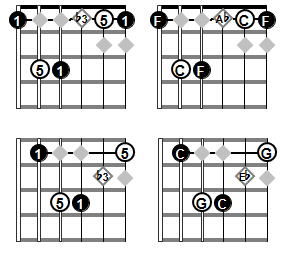

The most common minor barre chord is actually the E minor shape used in the CAGED system. If you were to fret an open E minor chord (E-G-B), but only used your pinky and ring finger to fret the chord, then your index finger would be free. If you were to slide the E minor shape up one fret and then use your index finger like a capo to hold down the previously open strings at the first fret, you will have successfully fretted an Fm barre chord. The same principle applies to playing a Cm barre chord with the Am shape.
Dominant seventh barre chords are achieved by altering either the major “E” or major “A” shape barre chord.
The E shape dominant seventh (1-5-♭7-3-5-1) and A shape dominant seventh (x-1-5-♭7-3-5) are seen below:


The simplest way to understand both of these shapes is like their major barre counterparts with a slight alteration. For the “E” shape, take your pinky off of the D string and let your index finger (the barre) fret it instead. This lowers the octave one whole step to the ♭7. For the “A” shape, take your ring finger off of the G string and let your index finger (the barre) fret it instead. This lowers the octave one whole step to the ♭7.
